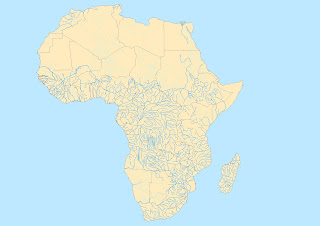Armando Jimenez
Labs from my Geography class called Geography 206, Intro to GIS. All my lab assignments will be posted here!
Monday, November 14, 2011
Tuesday, November 8, 2011
Monday, October 31, 2011
Monday, October 17, 2011
Monday, October 3, 2011
Thursday, September 22, 2011
Lab 4; No more steps!
1) Well the three datasets that I used were in form of Shapefile vector data. There were a lot of other items in there that were raster data but the three that i used were shapefile data.
2)Shapefiles
3) Caves.dbf, Caves.prj, Caves.sbn, Caves.shp, Caves.shx. Lab4_Marble.dbf, Lab4_Marble.prj, Lab4_Marble.sbn, Lab4_Marble.shp, Lab4_Marble.shx. Streams.dbf, Streams.prj, Streams.sbn, Streams.shp, Streams.shx
4) The information given when I opened the prj file was that it gave me the type of data it was and the size of how much data was stored under that file name.
5) .shp: it's a shapefile that describes geometries that are points, polylines, and polygons. The feature geometry itself. Shape format.
.shx: It's a shade index format allowing seeking forwards and backwards of information quickly
.sbn: It's a spatial index of features.
.prj: it's a coordinate system and a projection system file in plain text.
.dbf: It's a attribute format, columnar attributes for each shape in dBase V format
.shx: It's a shade index format allowing seeking forwards and backwards of information quickly
.sbn: It's a spatial index of features.
.prj: it's a coordinate system and a projection system file in plain text.
.dbf: It's a attribute format, columnar attributes for each shape in dBase V format
6) Contains all the spatial information of the whole map and saves it in a special kind of format.
7) When I opened the Mineralking geodatabase it opened a lot of small files contained in raster data that had a lot of boundaries, more streams, and specific polygons. it was like a completed project like the one i just did but more advanced that someone had to put together. The feature ones that where in there were, Boundaries, Geology, Hydrography, Infrastructure, Karst, Vegetation.
8)Microsoft Access opened when I clicked on Mineral King from my personal harddrive.
9) When I clicked the "+" to open MineralKingNE03c, there raster data layers that were labeled, "band 1-3" opened up as raster data.
10) I see five of them and they are labeled as, MineralKingNE03c.aux, MineralKingNE03c.sdw, MineralKingNE03c.sid, MineralKingNE03c.sid.aux, MineralKingNE03c.sid
11) Those extensions mean that they contain more set information for someone to use when they want to add more vector and raster data to their map when using ArcMap or Arc Catalog.
Thursday, September 15, 2011
Lab 3; Projections & Data
1) You are using Over-the-fly projections because we added layers from ArcCatalog onto ArcMap with the information that goes onto the map in ArcMap to explain population growth. We also used General-Purpose projections because those are for areas with middle Latitudes, as we had east and west orientations
2) The datum that seemed more common were Horizontal Datums because even though the map wasn't on the actual globe, you can still if you added graticule lines will still be able to pin point each location because those lines never change as do the states or continents that pass through them.
3) Alaska is the largest state in area as their area for the whole state is, 663,267 sq mi.
4) Alaska appears to be the biggest because, it got projected to fit onto the main map showing all the states from the United States. Of course in reality, Alaska does have the biggest area but on the map it makes it look 2x as big than it really is. Texas looks big as well and it does imply that it is huge because it is shaded darker than alaska but that only means which cities have had the most expansion in their population.
5)Below
6) A lot of the cities that belonged to the actual state at first before we adjusted our map, looked completely out of place. Some of them where in the ocean, others in different states, it didn't look right. We had to fix it because, well of course, that's not their correct position, and secondly becauser the map was too large for the dots to aligned themselves correctly. They also looked like that before we brought the fast cities date over from ArcCatalog so when we pasted it onto ArcMap, it needed a little adjusting as we brought a layer over onto the map to correctly adjust which cities did have the correct location. It didn't recognize the layer when we added it onto ArcMap as it was unknown. We had to go deep into the system and pull it out and then after magnify the map to get correctly and actually display the correct states as well as position them correctly in the states they go into.
Subscribe to:
Comments (Atom)










































